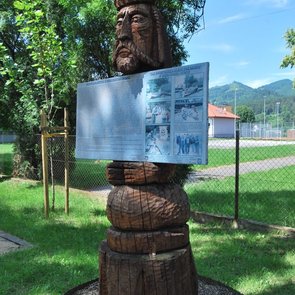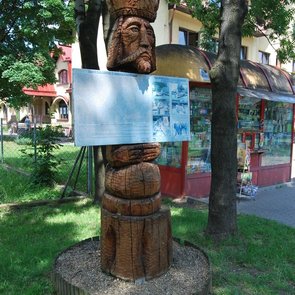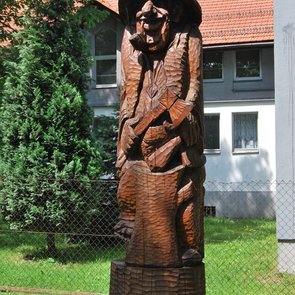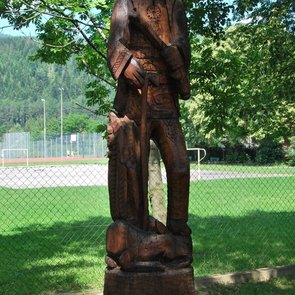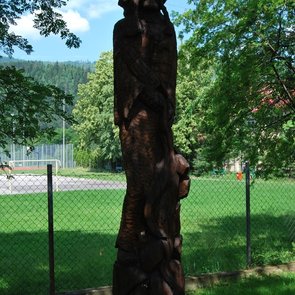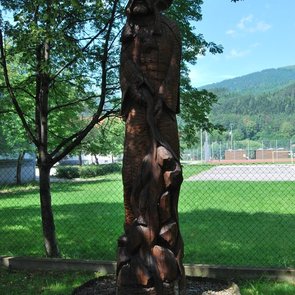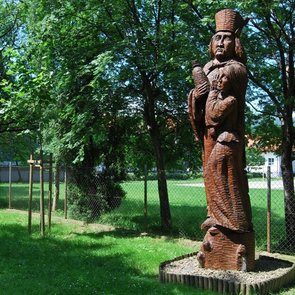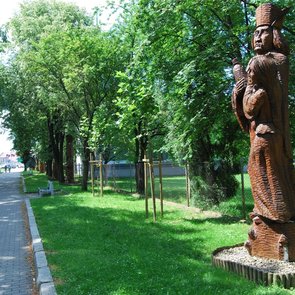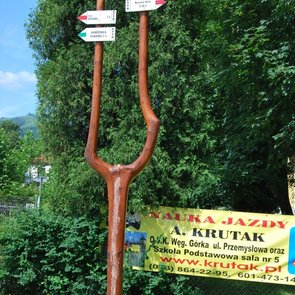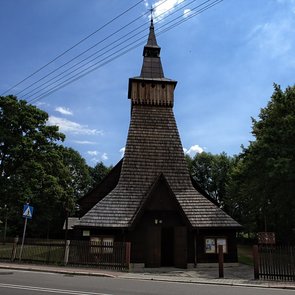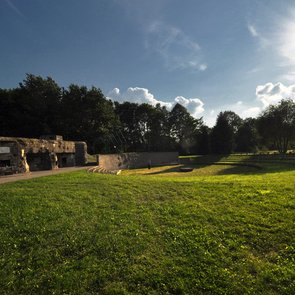Die Gemeinde Węgierska Górka hat noch eine Attraktion: Die Räuberallee ,die das Ergebnis der Open-Air-Festival Bildhauerei ist. Sie wurde im Juni 2009 stattgefunden. Das Ziel des Projektes war es, in Form von Skulpturen die Räuberallee präsentieren, eine Übersicht über die Charaktere und die Geschichte der Räuber aus Żywiec. Dieses Phänomen ist in lokalen Traditionen verwurzelt, es war und ist ein wichtiger Teil unserer Bergbewohnerkultur. Derzeit können Sie es in Tanz, Gesang, Kostüm zu sehen, aber auch in anderen Formen der Zeremonien und Volkskunst. Erstellen von Allee, die sich auf das Phänomen, in Folkskunst,zeitgenössischen Kino, Biographien und historische Forschung bezieht, ermöglicht heute näher kennenzulernen, wie sich die Räuber verhielten (positive und negative Aspekten). Es wird auch Bezug auf Anwendungen, Legenden und mündliche Darstellung über der Räuber als fester Bestandteil der lokalen Kultur. Er hat einen Einfluss auf die Entwicklung der sozialen, religiösen Gesetzgebung auch Folklore und Tradition, die wir von früheren Generationen erben. Die Jugendliche und die Kinder werden über die Techniken des Schnitzens erlernen und werden zusehen, wie die eingeladene Volkskünstler schnitzen. Es wird können, Erzählungen, Geschichten und Legenden über die Menschen aus unserer Region zu hören, die als die Räuber bekannt waren. Es gibt auch einen kleinen Ordner, der die Skulpturen aus der Räuberallee zeigt und die Geschichte und die Menschen in unserer Region beschreibt. Die Räuber waren von dem 16. Jahrhundert bis zum Ende des 19. Jahrhunderts im Kreis Żywiec, der Höhepunkt dieses Phänomens fällt stark von der 17. und 18. Jahrhunderts. Hier gab es sogar die Räuber, die Ritter- Räuber, und die so genannte Raubritter. Am Anfang des 17. Jahrhunderts gab die Räuber ein Problem, und in die Verfassung Warschau Sejm im Jahre 1620 eingetragen wurde: "(...) In den Fürstentümer gibt es so viele Räuber, dass die Bürger der Sicherheit in den Straßen, und auf den Dörfern, in den Städten und in den Herrenhäuser nicht haben können." Das 19. Jahrhundert ist im Grunde ein Rückgang von den Räubern. Es sind auch die einzelne Räuber aber das Problem von Räuber, das zwischen dem 17. und 18. Jahrhundert war, aufhört zu existieren. Einzelfälle von Räubern haben noch einen Platz an der Wende des 19. und 20. Jahrhunderts. Diese Phänomene hatten nichts mit klassisch verstanden Räuber zu tun, höchstens als ein fernes Echo der alten Traditionen angesehen werden. Die Räuberallee wurde mit Unterstützung des Schlesischen Marschall Büros etabliert. Die Räuberallee ist das Ergebnis der Open-Air-Festival Bildhauerei. Sie wurde im Juni 2009 stattgefunden. Das Ziel des Projektes war es, in Form von Skulpturen die Räuberallee präsentieren, eine Übersicht über die Charaktere und die Geschichte der Räuber aus Żywiec. Die Räuberallee hat 6 Skulpturen von bis zu 5 m.
Zobacz także


